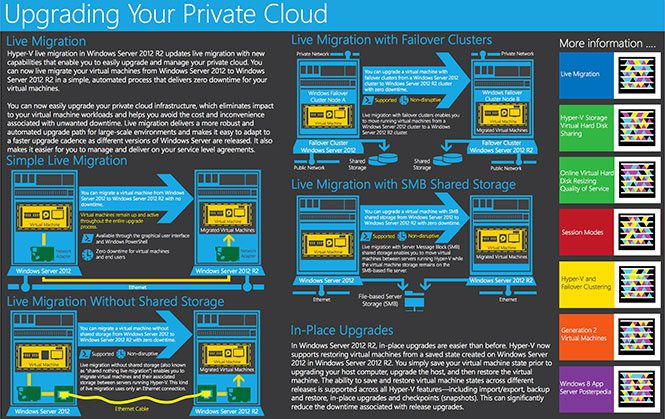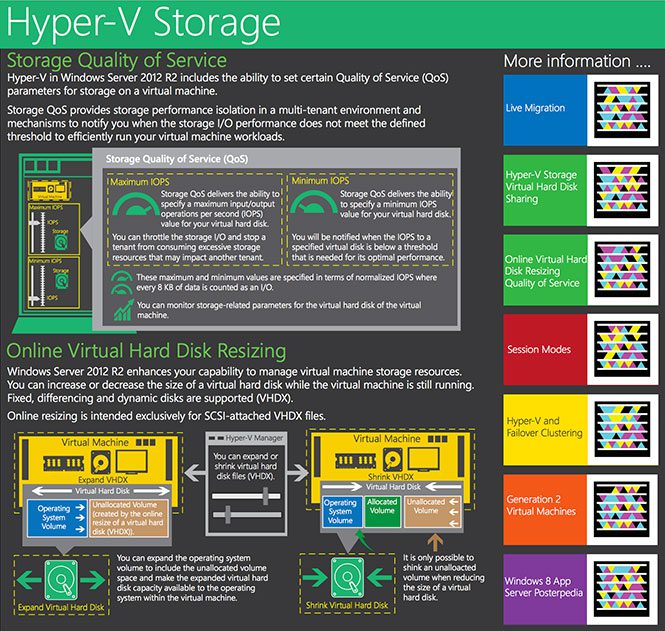Hyper-V on Win 11: A Full Guide

Unleash the power of Hyper-V on Windows 11 with this comprehensive guide. Learn how to optimize your virtualization experience now!
Table of Contents
Introduction to Virtualization on Windows 11
Imagine having multiple computers on your computer! That's exactly what virtualization does. In this section, we will explore the exciting world of running virtual machines on Windows 11 and what it all means for you as an 11-year-old reader.
Virtual machines on Windows 11 allow you to run different operating systems and software inside a window on your main computer. It's like having a secret room in your house where you can try out new things without any risk to your main computer.
By the end of this section, you'll have a clear understanding of how virtualization works and the wonders it can bring to your Windows 11 experience.
Understanding Virtual Machines
A virtual machine is like a pretend computer that runs inside your real computer. It's like having a make-believe computer that you can use for different things without changing anything on your real computer.
The Role of Hyper-V in Virtualization
Hyper-V is a special tool that helps your real computer create and manage virtual machines. It's like a magic wand that makes it possible for your computer to run multiple virtual machines at the same time.
Setting Up Hyper-V on Windows 11
Virtualization is a cool technology that allows you to run multiple operating systems on one computer. Hyper-V is a powerful tool that helps you to create and manage these virtual machines on your Windows 11 PC. Let's dive into how to set up Hyper-V on your computer!
System Requirements
Before you can start using Hyper-V on Windows 11, you need to make sure your computer meets the system requirements. You'll need a computer with a 64-bit processor that supports virtualization technology, like Intel VT-x or AMD-V. Your computer should also have at least 4GB of RAM, although more is better for running virtual machines smoothly. Lastly, make sure virtualization is enabled in your computer's BIOS.
Installation Steps
Once you've checked that your computer meets the requirements, it's time to install Hyper-V on Windows 11. Here's a simple guide to get you started:
- Open the Control Panel on your Windows 11 PC.
- Click on "Programs" and then "Turn Windows features on or off."
- Check the box next to "Virtual Machine Platform" and "Hyper-V" to enable these features.
- Click "OK" and let Windows install the necessary files.
- Restart your computer when prompted.
Once your computer restarts, you'll have Hyper-V installed and ready to use. Now you can start creating your own virtual machines and exploring different operating systems within Windows 11!
Creating Your First Virtual Machine with Hyper-V
Now that you have Hyper-V set up on your Windows 11 computer, it's time to create your first virtual machine! Let's walk through the steps together to get you started on your virtualization journey.

Image courtesy of www.actualtechmedia.com via Google Images
Choosing an Operating System for Your VM
An operating system (OS) is like the boss of your computer. It tells all the other parts what to do. For your virtual machine, you can choose from different operating systems like Windows, Linux, or even macOS if your computer supports it.
Think about what you want to do on your virtual machine. If you're into gaming, you might want to pick an OS that works well with your favorite games. If you're more into coding, you might choose an OS that's popular for programming.
Virtual Machine Settings
Once you've picked your operating system, it's time to set up your virtual machine. You'll need to decide how much memory (RAM) and storage space you want to give your VM. Just like in real life, more memory means your VM can do more things at once, like running multiple apps smoothly. More storage space gives your VM room to store files and programs.
| Topic | Details |
|---|---|
| Introduction | What is Hyper-V and its purpose |
| Compatibility | Requirements and supported operating systems |
| Installation | Steps for installing Hyper-V on Windows 11 |
| Configuration | How to configure virtual machines and networks |
| Management | Managing virtual machines and their resources |
| Advantages | Benefits of using Hyper-V on Windows 11 |
| Disadvantages | Potential drawbacks and limitations |
Don't worry if you're not sure how much memory or storage to allocate. You can always adjust these settings later if you find that your VM needs more resources to run smoothly.
With these basic steps, you're well on your way to creating your first virtual machine with Hyper-V on Windows 11. Have fun exploring the virtual world on your computer!
Alternatives to Hyper-V: VMware Workstation on Windows 11
When it comes to creating virtual machines on Windows 11, Hyper-V is a great option. However, there are other alternatives out there, one of which is VMware Workstation. Let's explore what VMware Workstation is and how it differs from Hyper-V.
What is VMware Workstation?
VMware Workstation is a software application that allows you to run multiple virtual machines on your Windows 11 computer. Just like Hyper-V, VMware Workstation creates a virtual environment where you can install and run different operating systems without affecting your main system.
One of the key differences between VMware Workstation and Hyper-V is that VMware Workstation is a third-party software that you need to install separately, whereas Hyper-V comes built-in with Windows 11 Pro and Enterprise editions.
VMware Workstation offers a user-friendly interface and a variety of features that make it easy to create, run, and manage virtual machines. It's a popular choice for professionals and enthusiasts who need advanced virtualization capabilities beyond what Hyper-V provides.
Conclusion
In conclusion, we have explored the exciting world of virtualization on Windows 11, specifically focusing on Hyper-V. We have learned how virtual machines work, why Hyper-V is essential for creating them, and the steps involved in setting up Hyper-V on your Windows 11 device.

Image courtesy of www.actualtechmedia.com via Google Images
Virtualization opens up a whole new realm of possibilities, allowing you to run different operating systems and software on a single computer. With Hyper-V, you can create and manage virtual machines with ease, expanding your computing experience in ways you never thought possible.
As you continue to explore the world of technology, remember that virtualization is just one of the many tools at your disposal. Whether you choose Hyper-V or alternatives like VMware Workstation, the key is to experiment, learn, and have fun along the way.
So go ahead, unleash your creativity, and dive into the exciting world of virtualization on Windows 11. Who knows, you might just discover a new passion for technology that could shape your future endeavors. Happy virtualizing!
Frequently Asked Questions (FAQs)
Can I play games on a virtual machine?
Yes, you can play games on a virtual machine, but there are some limitations. Virtual machines may not have access to your computer's full graphics capabilities, which can affect the performance of some games. It's best to play simpler games on a virtual machine rather than high-end, graphics-intensive games.
Is using Hyper-V hard?
Using Hyper-V may seem a little tricky at first, but with some practice and guidance, you can easily get the hang of it. The steps to set up Hyper-V are pretty straightforward, and once you understand the basics, you'll be creating virtual machines in no time!
Can Hyper-V virtual machines get viruses?
Just like with a regular computer, virtual machines can also be at risk of getting viruses if proper precautions are not taken. It's important to install antivirus software on your virtual machines and keep them up to date to reduce the risk of getting viruses. Additionally, being cautious about the websites you visit and the files you download can help prevent virus infections on your virtual machines.


